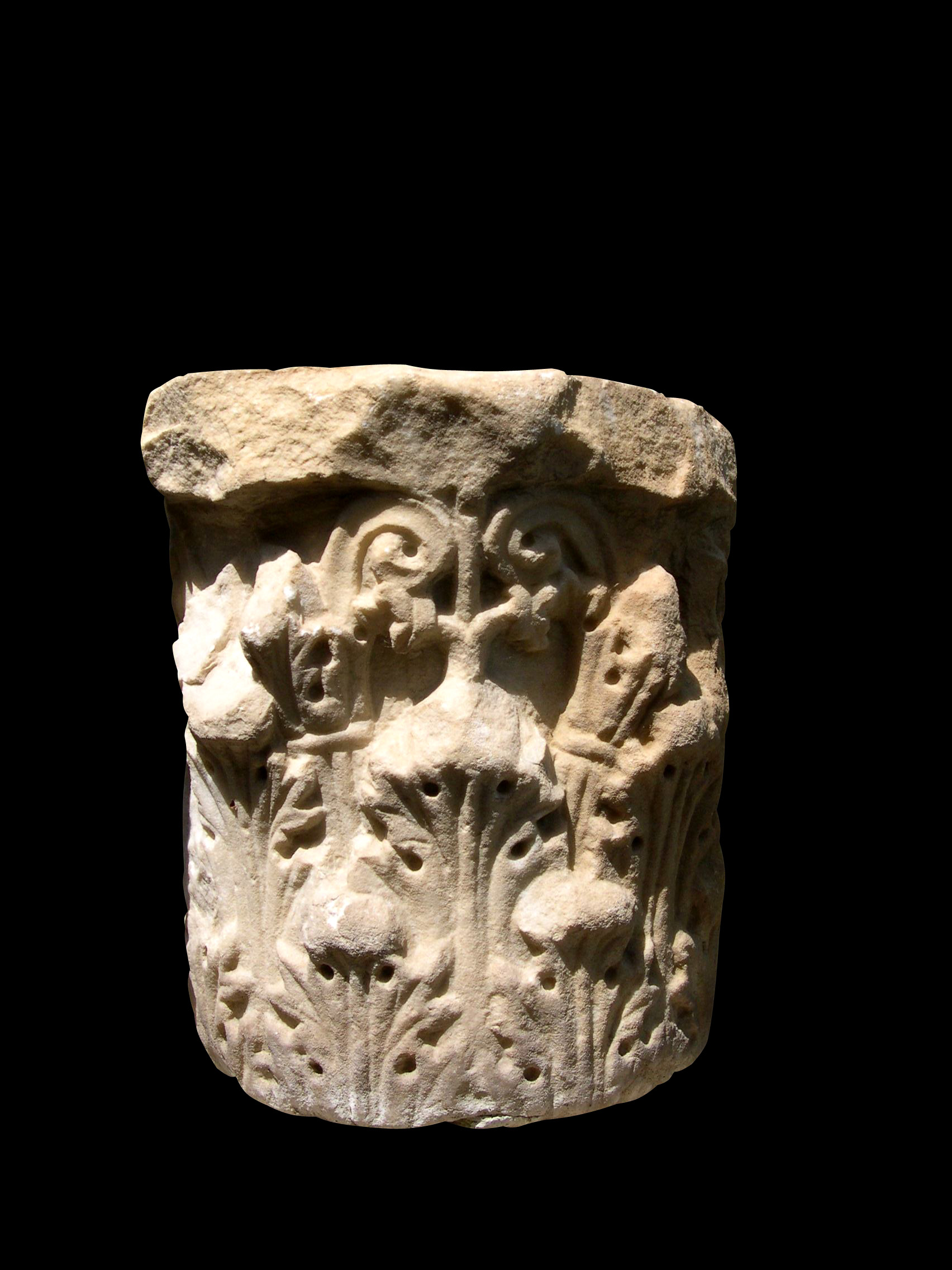Corinthian column capital
Corinthian column capital with two crowns of eight acanthus leaves, each articulated in five lobes with spiky points still reminiscent of the late Republican form of acanthus (h. of the first crown 12 cm; of the second 20 cm). The tip of the points is not rounded yet, as it will later be during the imperial age. The page of the leaf features a pair of incisions flanking the midrib and two more, rather shallow ones, that open upwards into the upper lobes; further incised lines also mark the centre of the spiky points. Where the two points meet, they create rounded voids obtained with a single drill-hole, followed by another void in the shape of an open triangle, as customary for capitals of the early and middle Augustan age. A similar motif decorates the calyx leaves, where the round void is followed by a proper triangle with closed vertex. The cauliculi are ridged, slightly bent and end with a thick plain rim. The stem of the abacus’ rosette bears two small bifurcated leaves, held together by a thin plain band, that touch the tip of the calyx leaves. The volutes are broken away, while the helices are made of a concave strip ending in a spiral with central drill-hole. The sides of the abacus are also broken (h. 5,5 cm). Considering the abovementioned stylistic characteristics and the comparisons with other Corinthian capitals retrieved in Ostia, it is possible to date our artefact towards the end of the I century BC.







